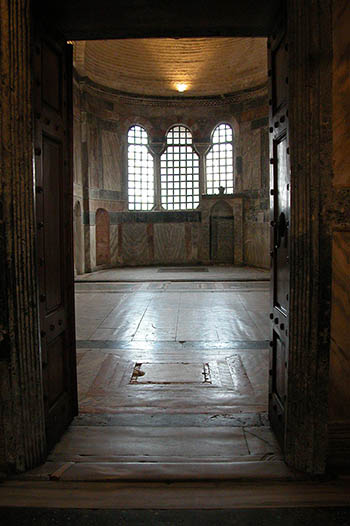
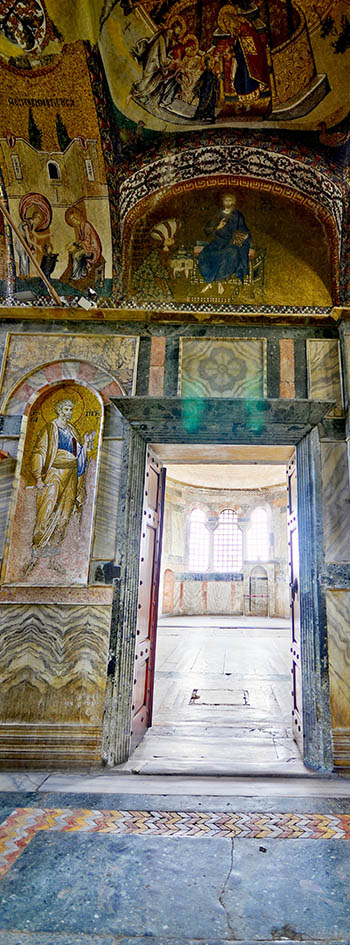
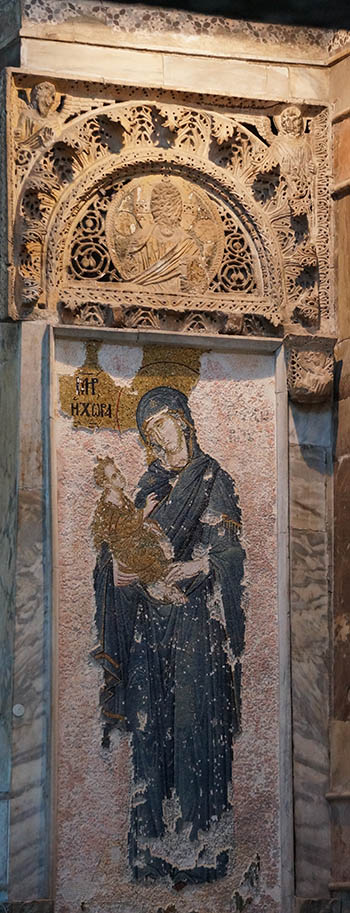
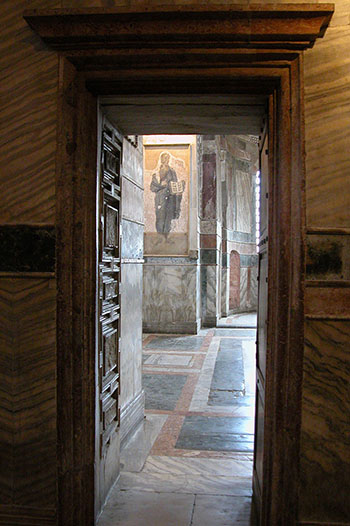
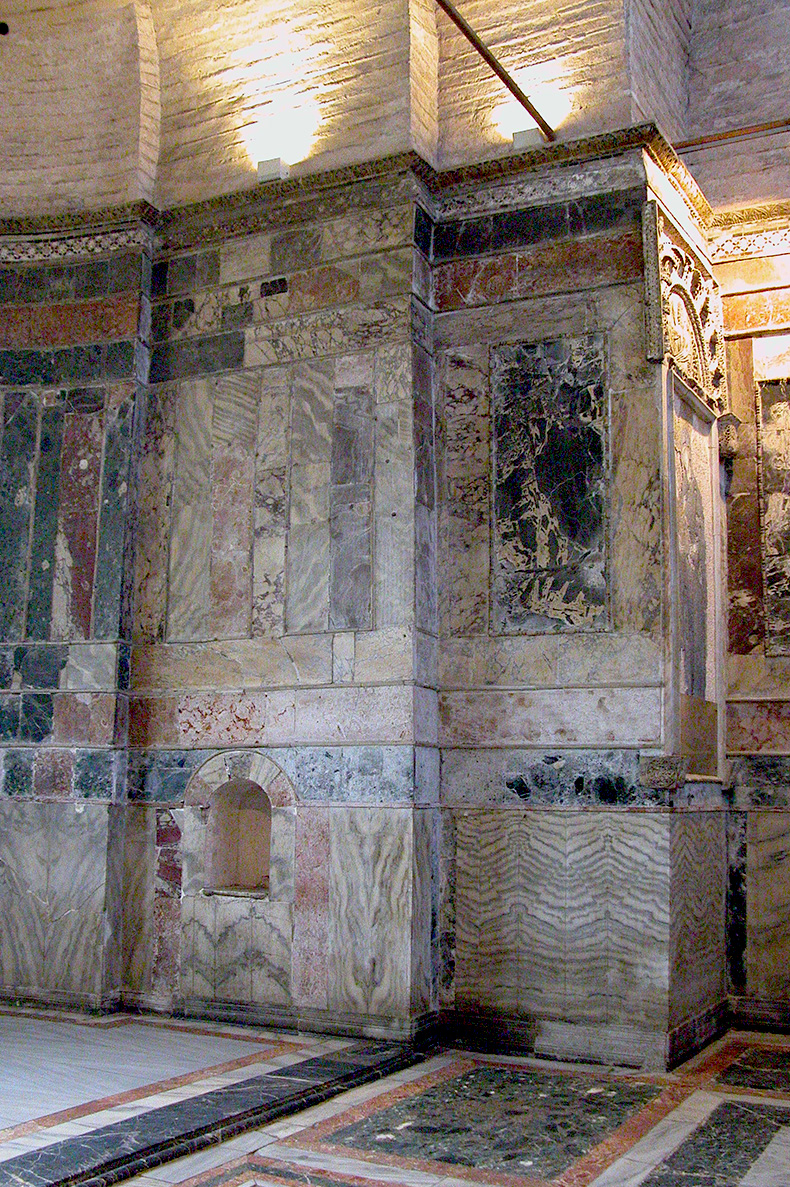
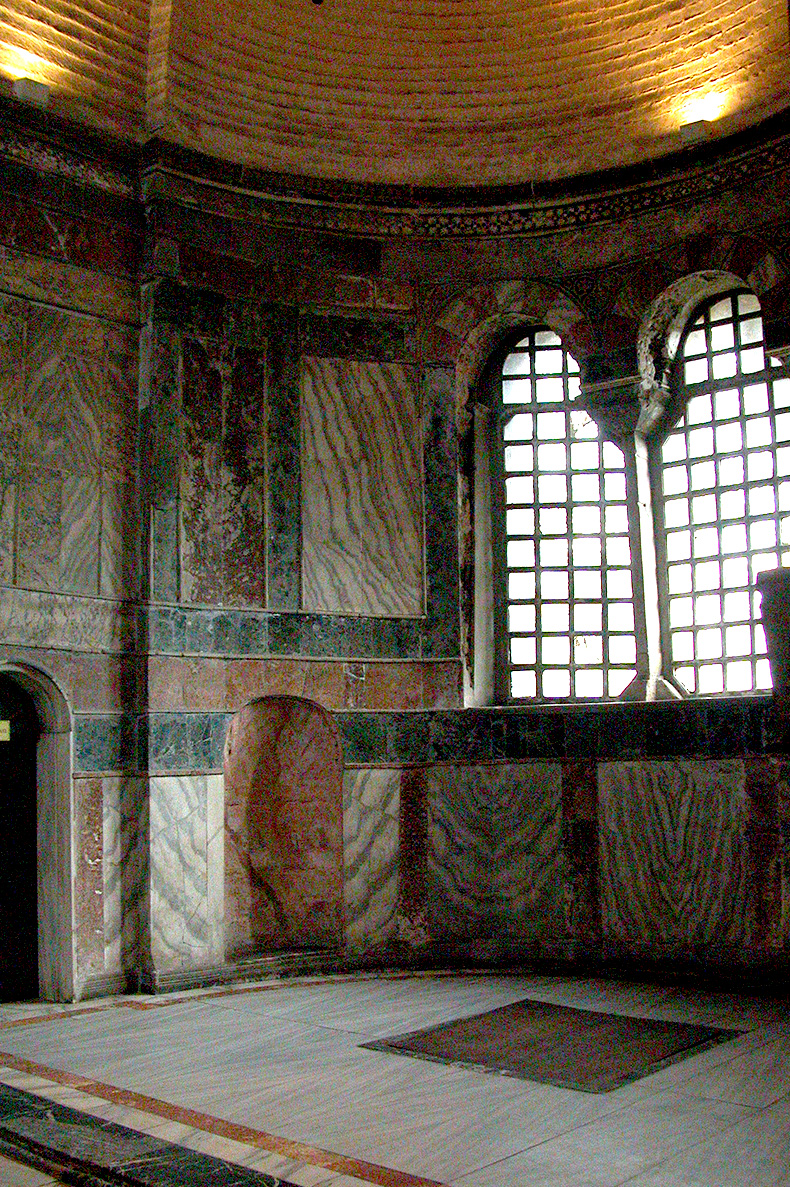
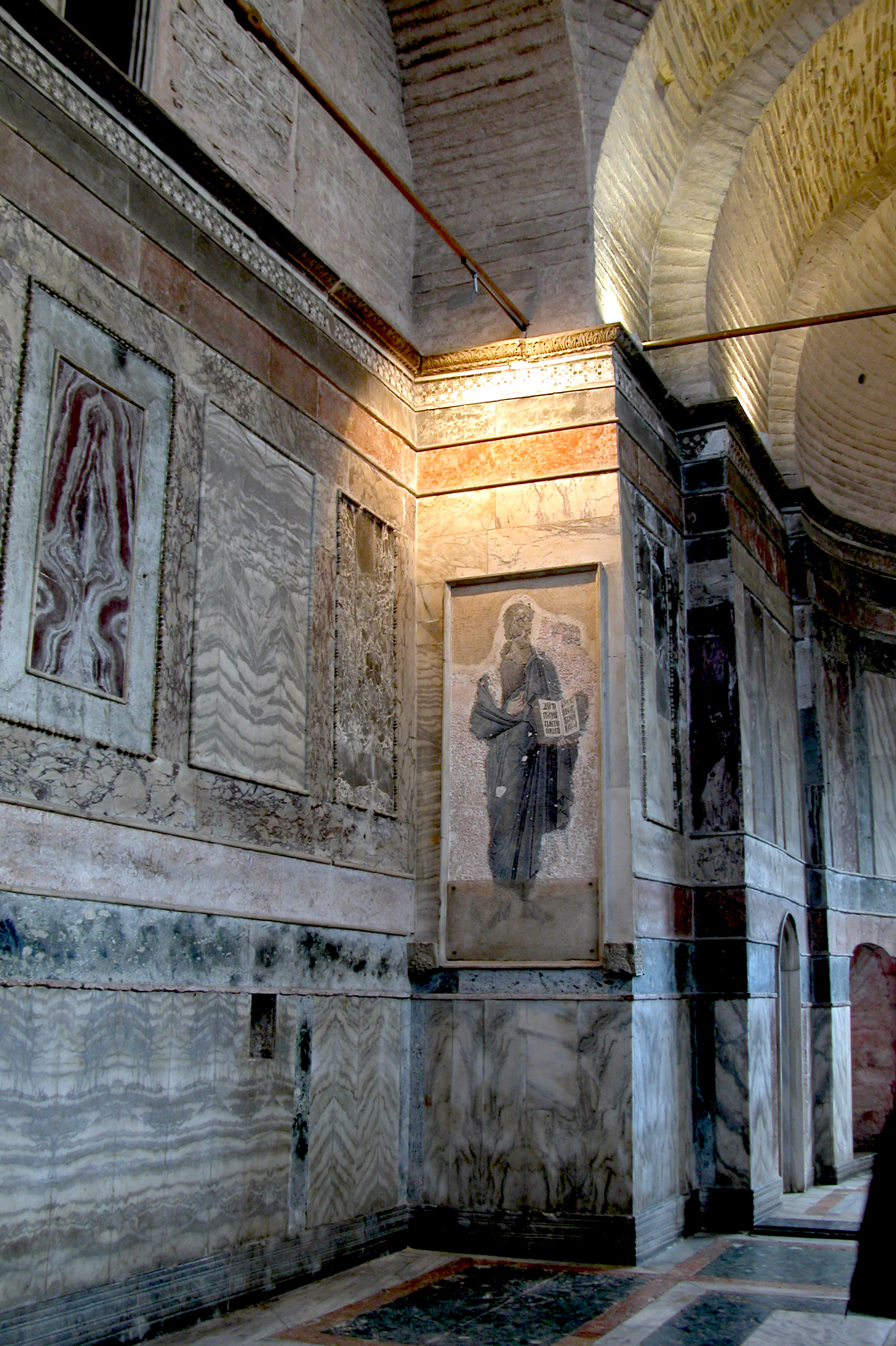
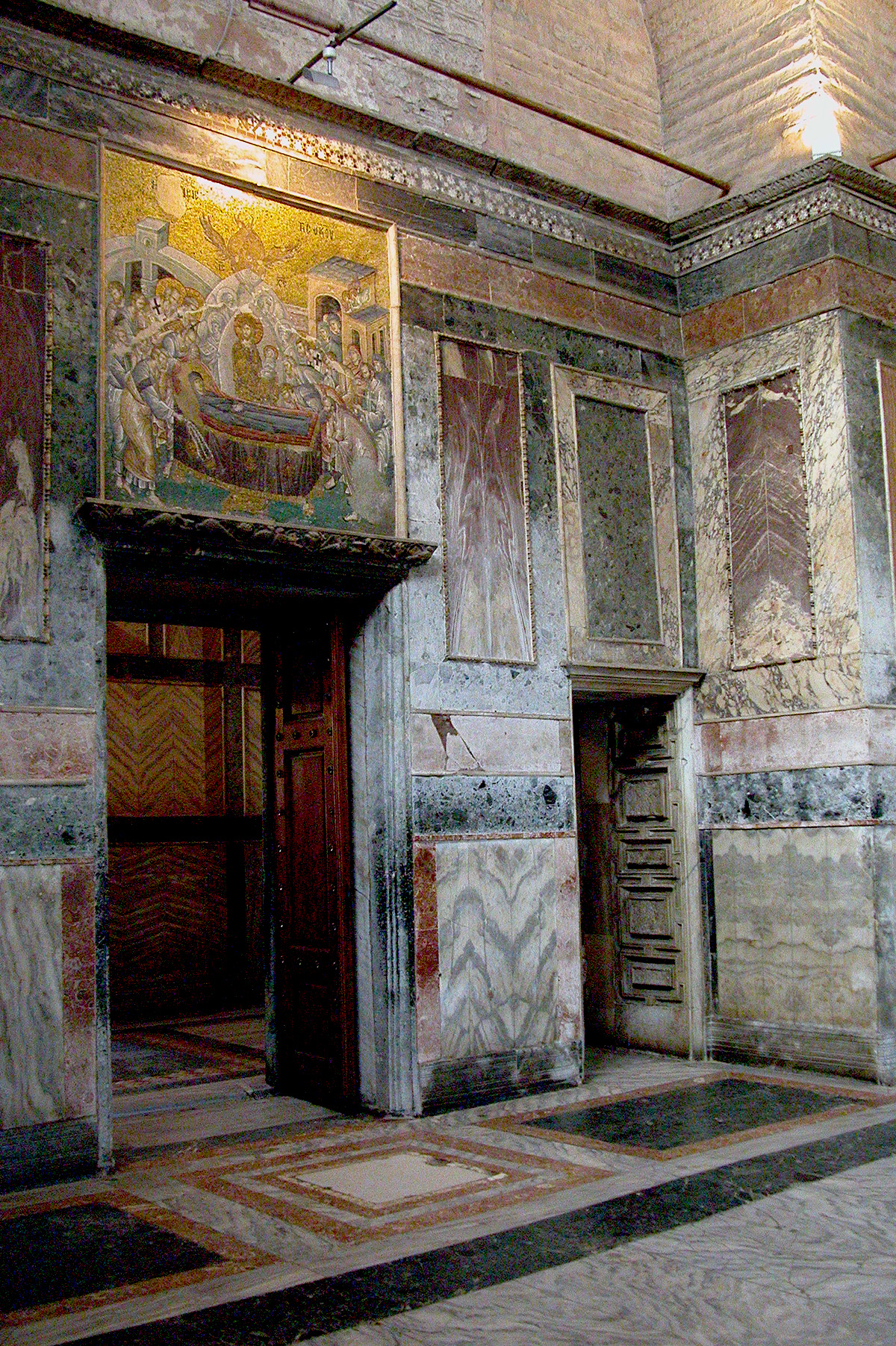
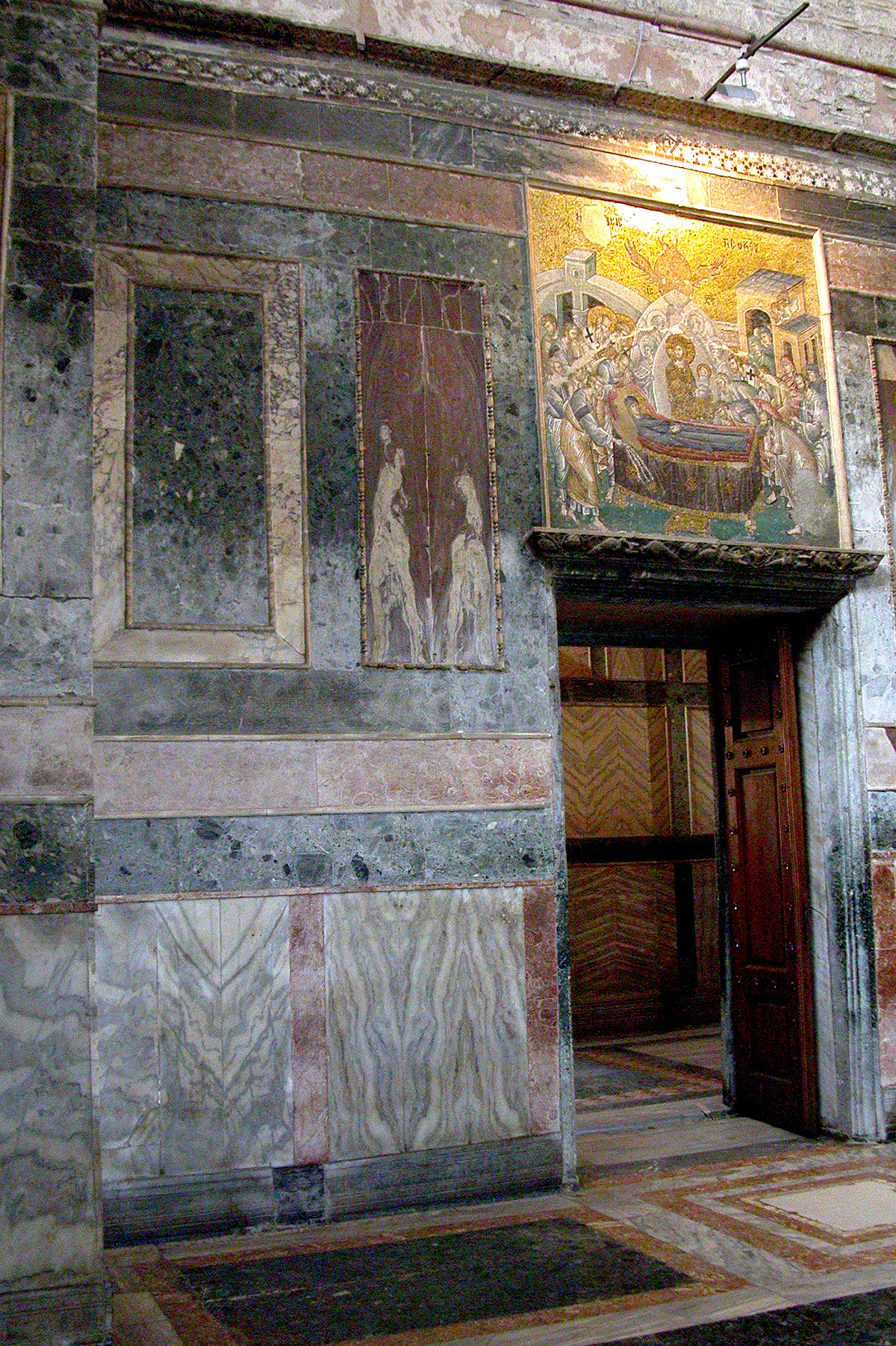
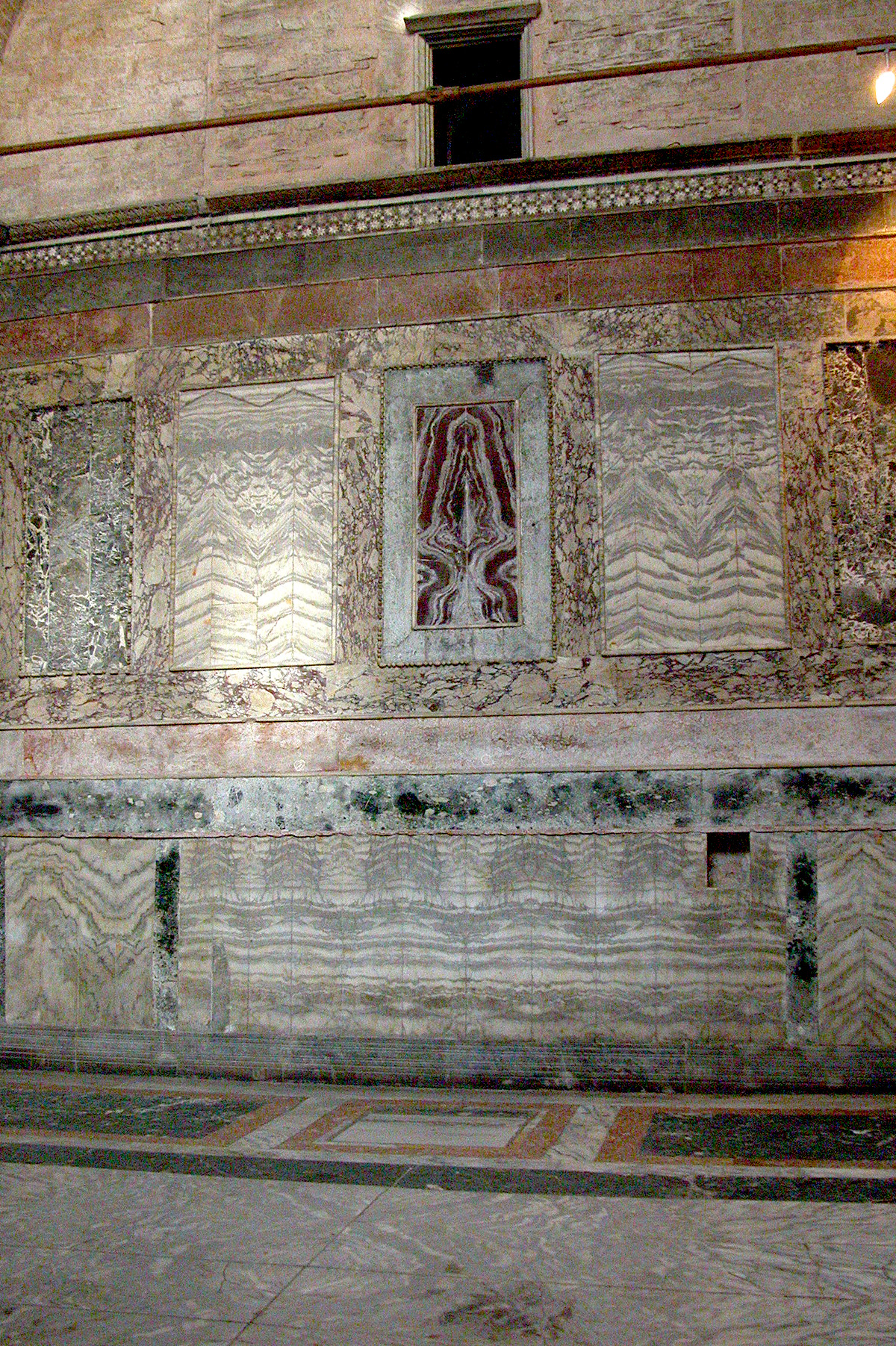
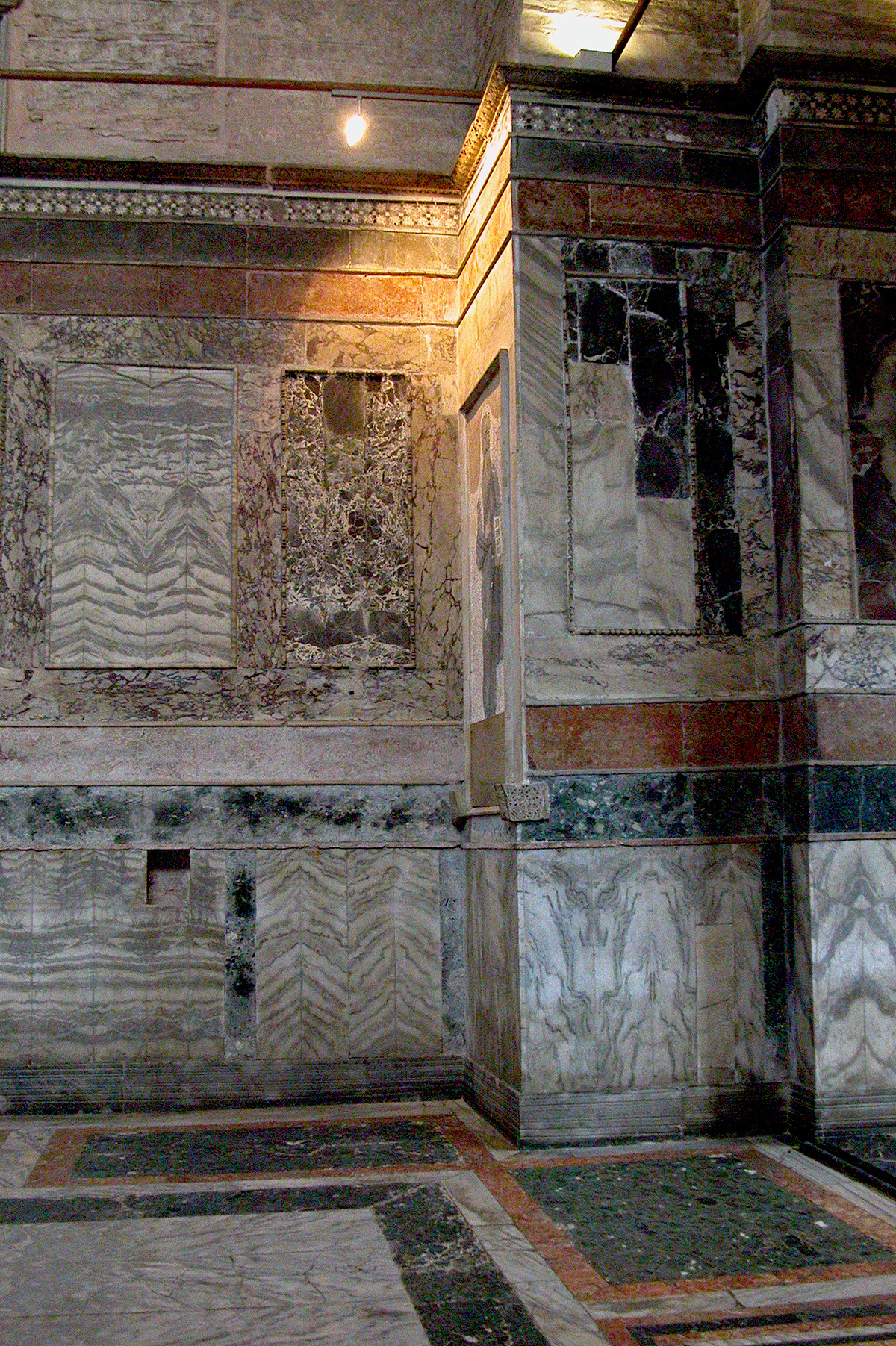
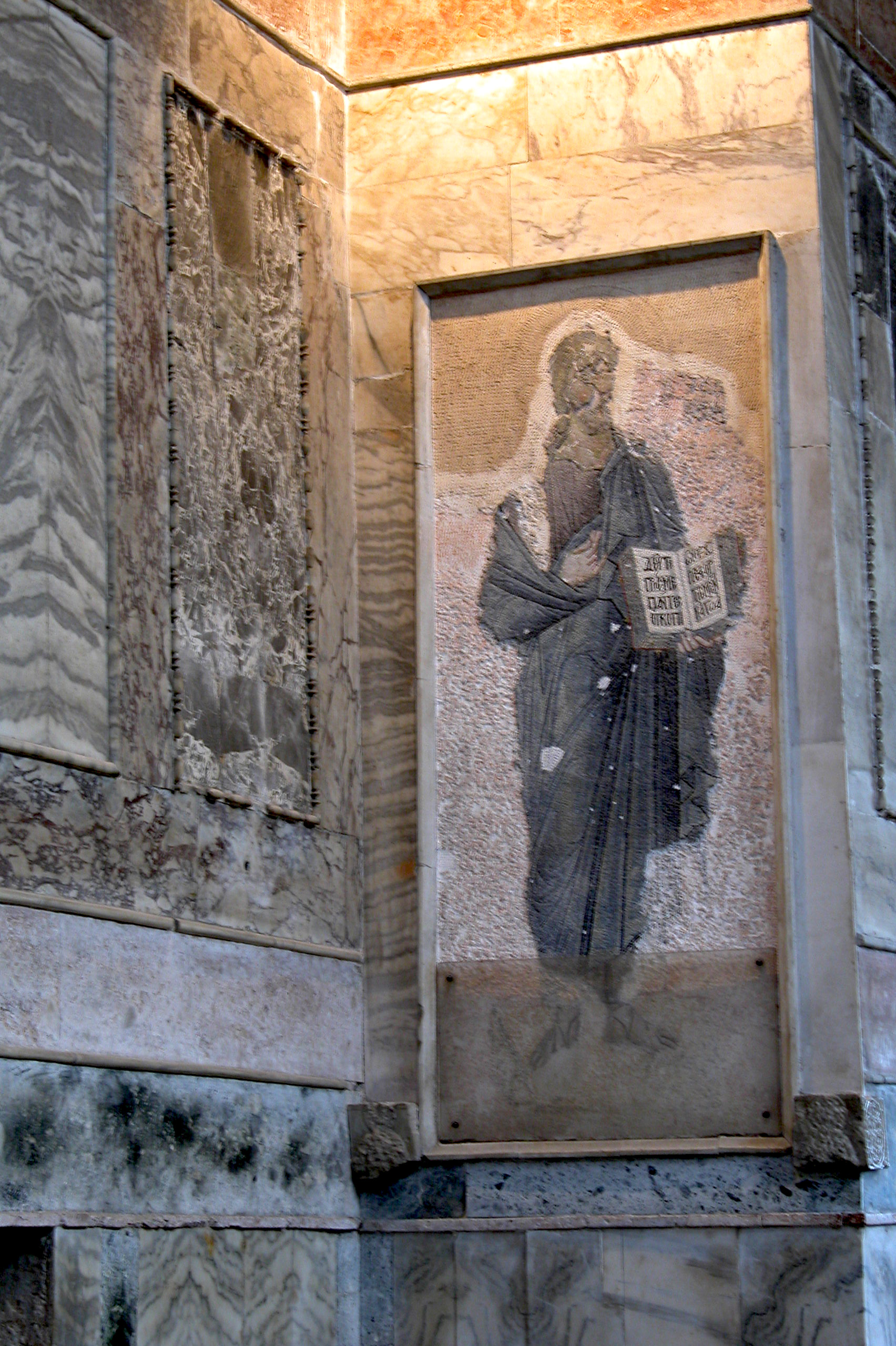
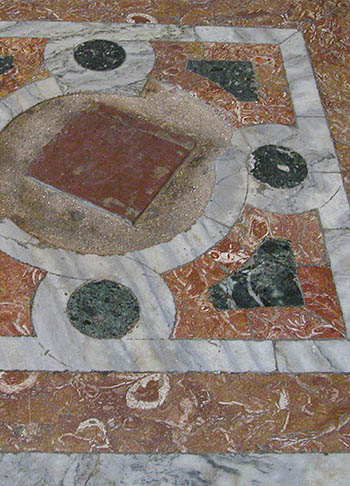

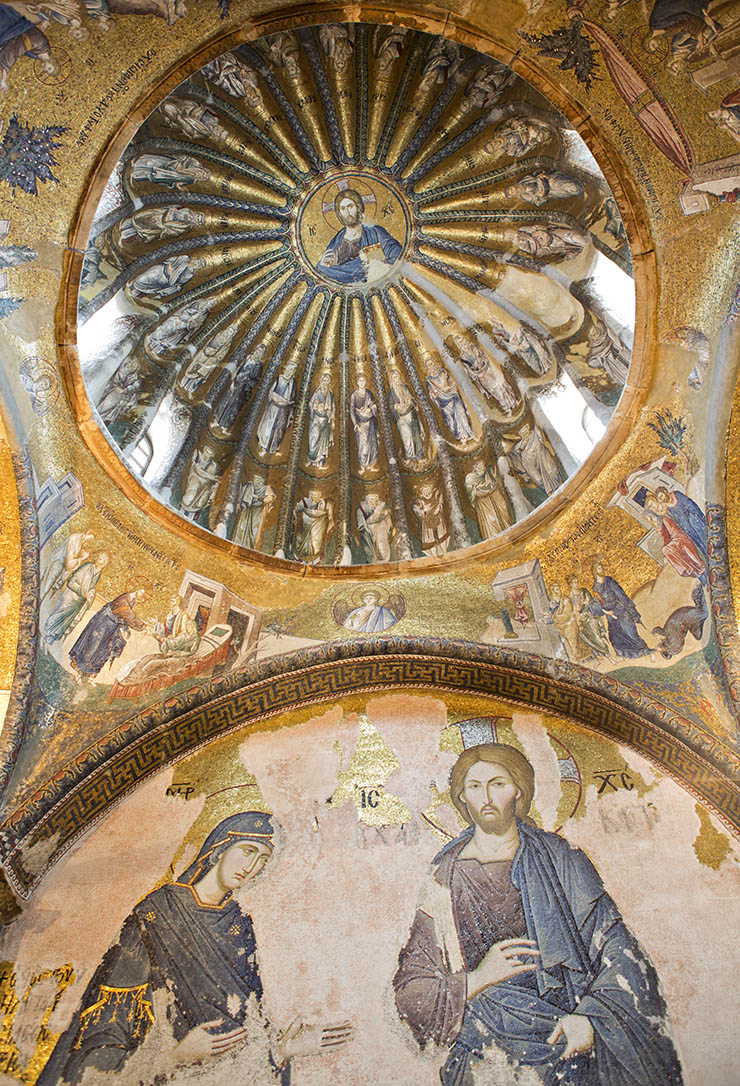
The icon of Christ with his Mother is set below a dome with the Pantokrator in the center and surrounded by His ancestors. It is a huge panel, 16 feet tall. The head of Christ is 2.5 feet tall, almost the same size as the Pantokrator over the main door, and the same size as the mosaic of Christ Pantokrator in the South Gallery of Hagia Sophia. I don't see any marks in the mosaic above Christ where lamps would have hung. Perhaps candle stands were placed in front of it.
This icon represents Christ Chalkites, an image that was erected over the great gate of the Sacred Palace. That icon had veils hung in front of it which performed miraculous cures. Alexios I Komnenos was healed after contact with one of these veils. The image remained an object of veneration right up until the end of Byzantium, even after the Great Palace had been mostly abandoned and the Chalke Gate no longer functioned as a portal.
Another mosaic icon of a standing Christ Chalkites of identical size was erected over the Royal Door of Hagia Sophia which was destroyed after 1453. This icon was described by pilgrim accounts. It was a focus of veneration in the nave both as one entered from the narthex and as one exited the church. However the Royal Door was usually closed end pilgrims entered by the furthest door to the north. The space in front of the Royal Door was decorated with candle stands, hanging candelabra and icons mounted on the door itself and the piers on either side of it.
Theodore Metochites, the founder of the monastery, tells us that this was his favorite icon in the church and he spent a great deal of time admiring its beauty and praying in front of it. One can imagine the light of the bees wax candles flickering off of the gold mosaic, the fragrance of incense, combined with the sound of monks chanting and singing coming from the sanctuary in this spot.
The relationship between the figure of the Theotokos and Christ is called a Deesis, where the Virgin intercedes on behalf of humankind. In this icon there are small images of Isaac Komnenos and the nun Melene, former founders of the Monastery of the Chora who supplicate themselves before God. Normally, John the Baptist appears on the opposite side of Christ.
The inscription reads Jesus Christ of the Chalke, the Mother of God, The Son of the most high Emperor Alexis Komnenos, Isaac the Porphyrogenite and ... of Andronikos Paleologos, the Lady of the Mongols, Melane the nun.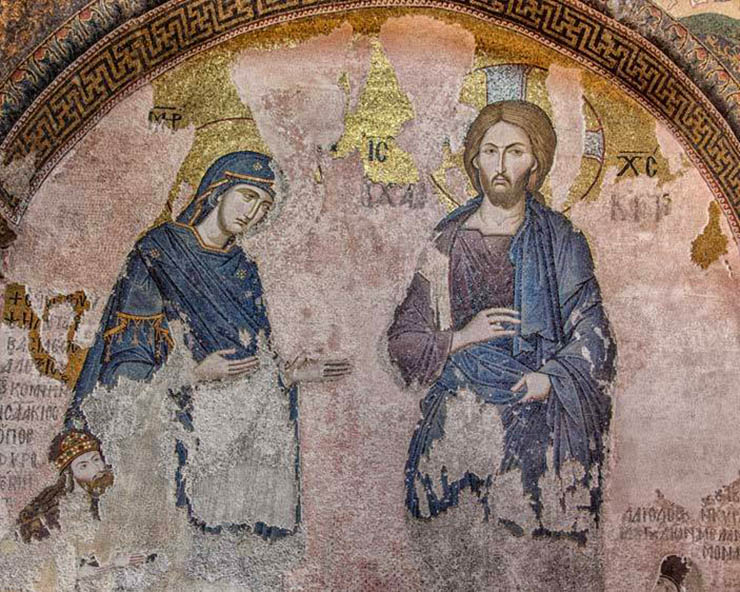 It is very difficult to see the mosaic properly because of the cramped space in front of it. This image was taken straight on and the faces are the right proportion.
It is very difficult to see the mosaic properly because of the cramped space in front of it. This image was taken straight on and the faces are the right proportion.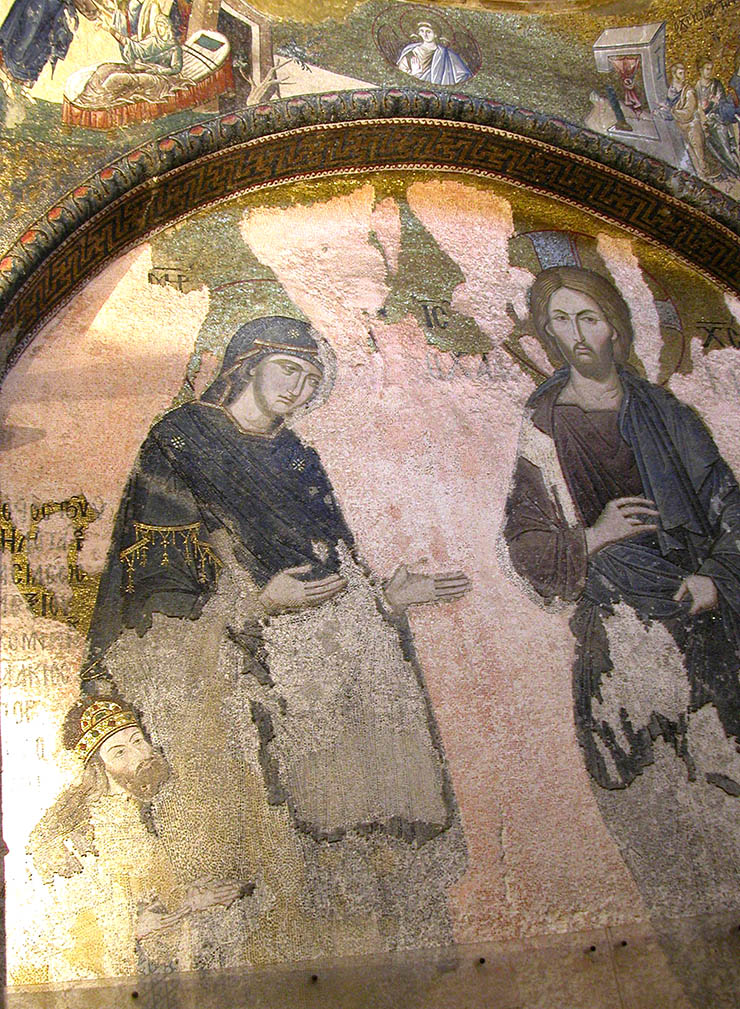 Here is a picture taken from the point of view of the visitor to the church.
Here is a picture taken from the point of view of the visitor to the church.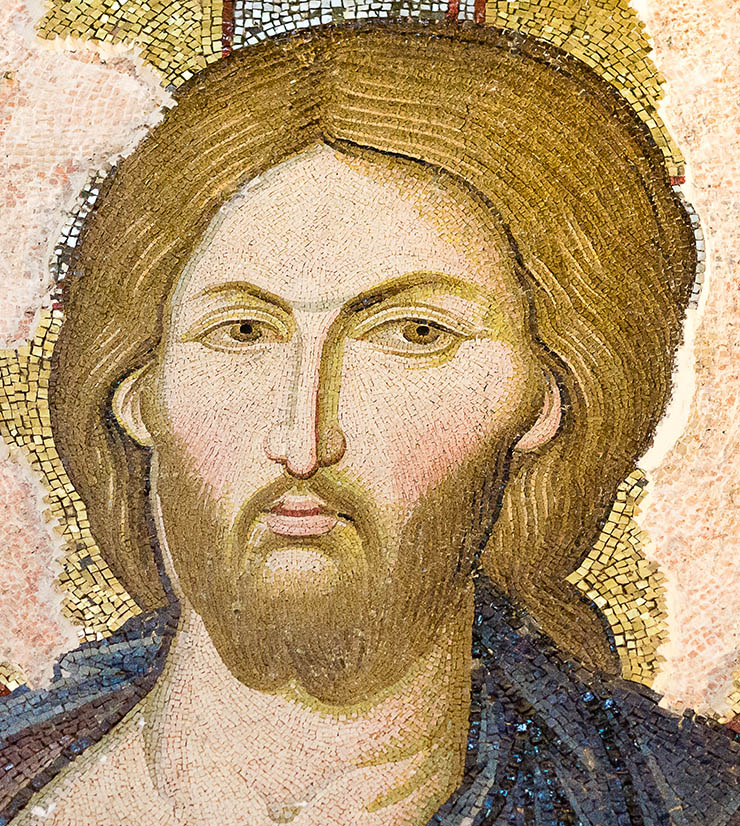 The icon of Christ Chalkites was the public symbol of the Constantinople and the Christian empire. It was the image that most people saw as they went about their daily lives in the center of the city. It had been destroyed during iconoclasm and was one of the first images put back up after the restoration of icons. I don't know if the original Christ Chalkites was standing and not a bust icon. Here we have another blond Christ. His tunic is made of three values of blue-violet glass cubes drawn in black glass cubes and the himation is composed of five values of blue glass, also outlined in black.
The icon of Christ Chalkites was the public symbol of the Constantinople and the Christian empire. It was the image that most people saw as they went about their daily lives in the center of the city. It had been destroyed during iconoclasm and was one of the first images put back up after the restoration of icons. I don't know if the original Christ Chalkites was standing and not a bust icon. Here we have another blond Christ. His tunic is made of three values of blue-violet glass cubes drawn in black glass cubes and the himation is composed of five values of blue glass, also outlined in black.
It's interesting that the artist intentionally used gray cubes to model the far left side of the face and neck. The same color was used in the cleft between the two eyebrows.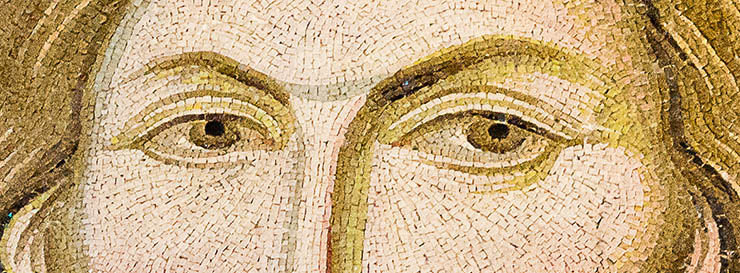
The eyes are different than most images of Christ Pantokrator. They are narrow and not rounded. They do not look directly at the view, but are slightly turned towards the right. The pupils are black. The whites of the eyes are soft and smooth. There is no red used. In shape they resemble the eyes of Christ Deesis in the South Gallery of Hagia Sophia. The cheeks are smooth and youthful. Here the flesh tones are white and pink marble. The face is flatter and does not have white highlights. I don't think the artist is the same one who did the Pantokrator over the main door.
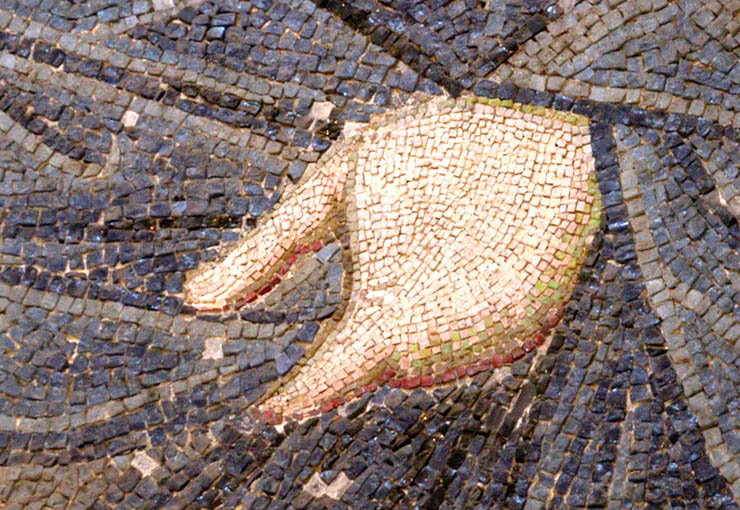 The hand is outlined in red glass cubes.
The hand is outlined in red glass cubes.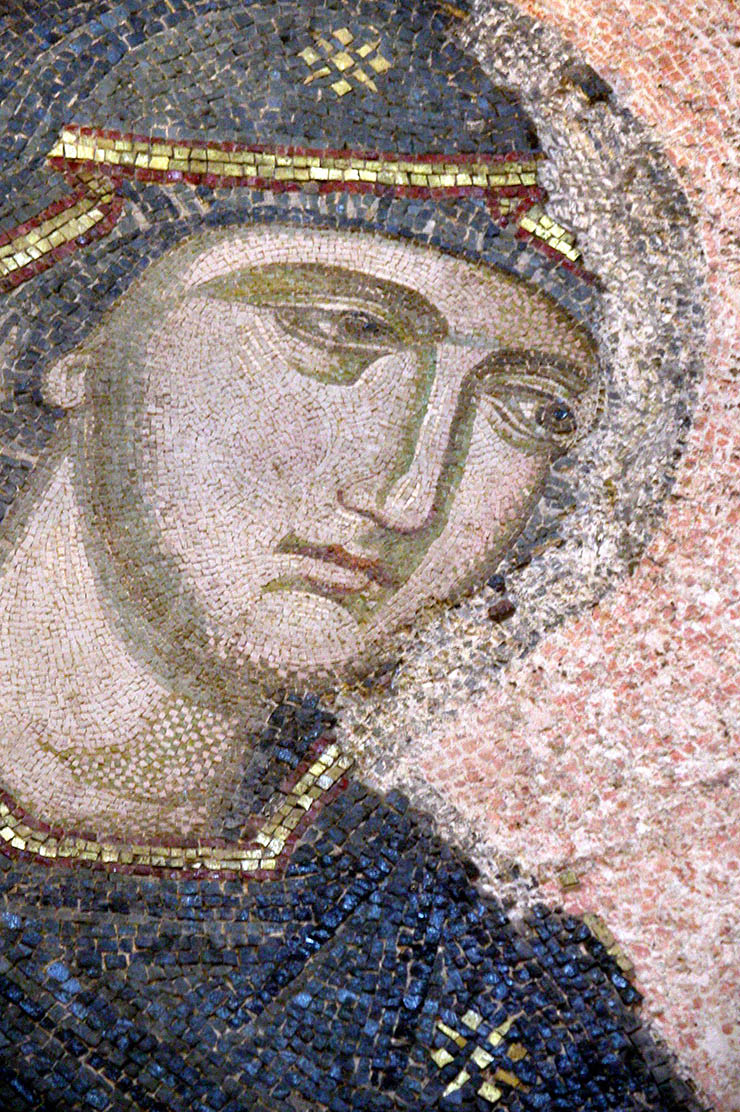 The face of the Theotokos is modeled in a different way than the image of Christ. Notice the checkerboard pattern on the chin and neck. Perhaps we have two artists at work - or one artist is copying the modeling of two different icons. The maphorion of the Virgin is made of same blue glass cubes as Christ. There are three gold stars on the maphorion which is also edged and fringed in gold. Two red glass lines outline the gold. The gold stars symbolize the three virginities of the Theotokos.
The face of the Theotokos is modeled in a different way than the image of Christ. Notice the checkerboard pattern on the chin and neck. Perhaps we have two artists at work - or one artist is copying the modeling of two different icons. The maphorion of the Virgin is made of same blue glass cubes as Christ. There are three gold stars on the maphorion which is also edged and fringed in gold. Two red glass lines outline the gold. The gold stars symbolize the three virginities of the Theotokos.
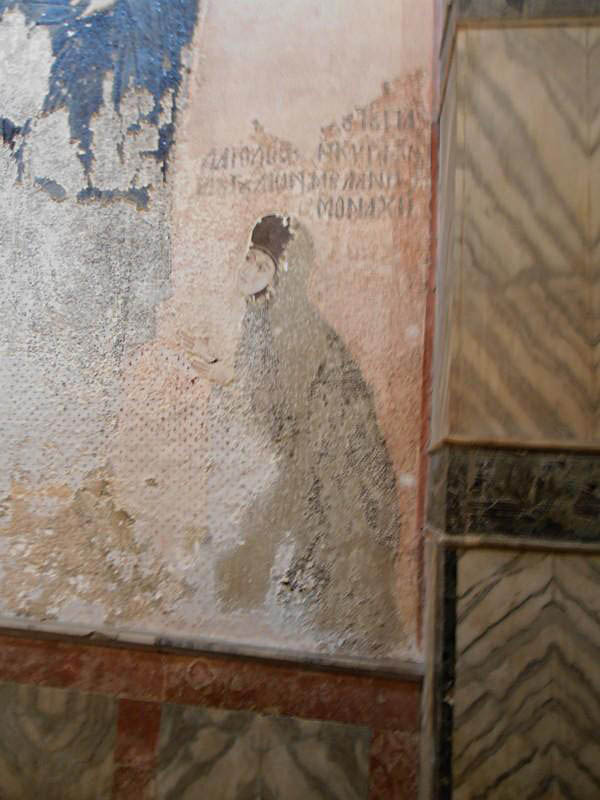
Above are the remains of the mosaic of the nun Melane. There are two possibilities in the identification of this figure. The first is Maria Palaeologina, illegitimate daughter of Michael VII Palaeologos and the half sister of Andronikos II, known as Despoina of the Mongols because of her marriage and conversion of the Great Khan, Abaga, in 1265. The second possibility is that the nun Melane was the princess Maria, illegitimate daughter of Andronikos II, who married Tukaii, the Mongol Khan of the Golden Horde, in the last decade of the thirteenth century. It is possible that Christ's eyes turn left in direction of Melane.
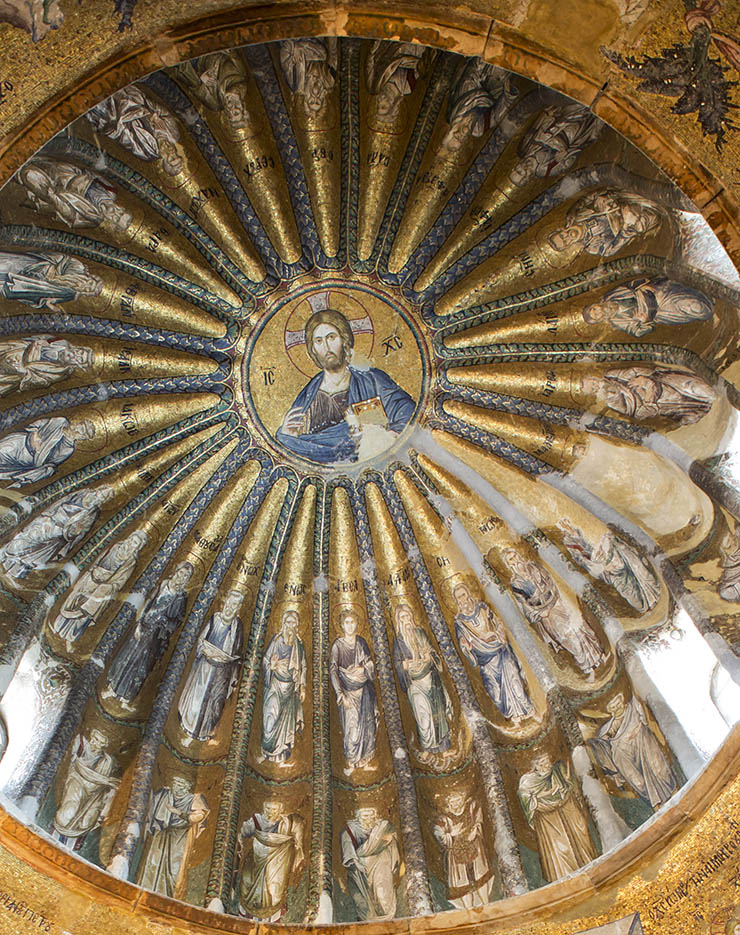

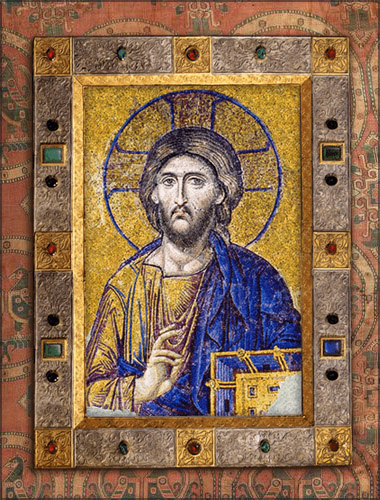














 click here for icons of christ
click here for icons of christ click here for icons of the theotokos
click here for icons of the theotokos click here for icons of angels
click here for icons of angels click here for icons of saints
click here for icons of saints